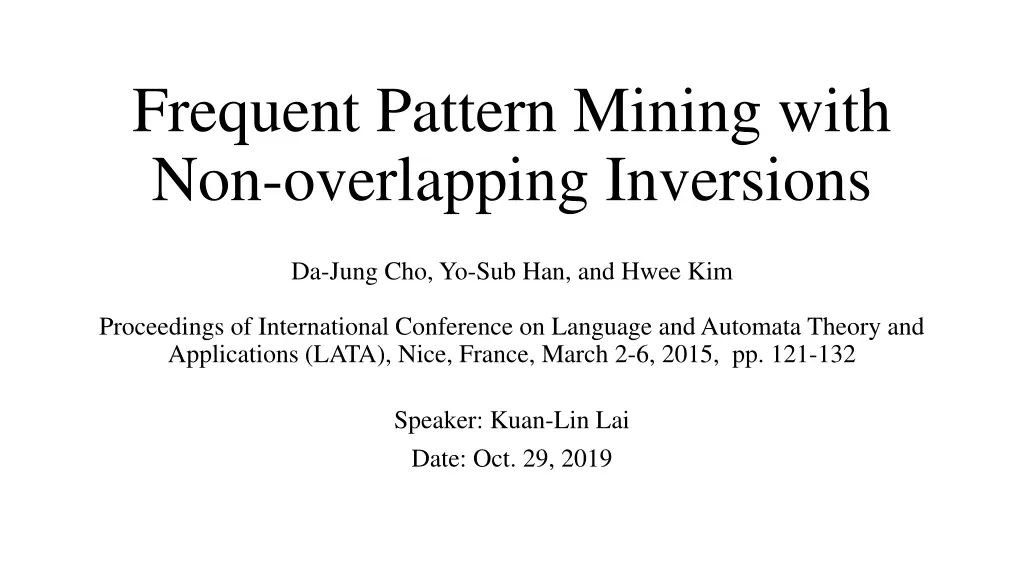
Efficient Algorithms for Frequent Pattern Mining with Non-Overlapping Inversions
Explore efficient algorithms for identifying frequent patterns in biological sequences with non-overlapping inversions, a crucial method in bioinformatics for studying sequence conservation and evolution.
Download Presentation

Please find below an Image/Link to download the presentation.
The content on the website is provided AS IS for your information and personal use only. It may not be sold, licensed, or shared on other websites without obtaining consent from the author. If you encounter any issues during the download, it is possible that the publisher has removed the file from their server.
You are allowed to download the files provided on this website for personal or commercial use, subject to the condition that they are used lawfully. All files are the property of their respective owners.
The content on the website is provided AS IS for your information and personal use only. It may not be sold, licensed, or shared on other websites without obtaining consent from the author.
E N D
Presentation Transcript
Frequent Pattern Mining with Non-overlapping Inversions Da-Jung Cho, Yo-Sub Han, and Hwee Kim Proceedings of International Conference on Language and Automata Theory and Applications (LATA), Nice, France, March 2-6, 2015, pp. 121-132 Speaker: Kuan-Lin Lai Date: Oct. 29, 2019
Abstract Frequent pattern mining is widely used in bioinformatics since frequent patterns in bio sequences often correspond to residues conserved during evolution. In bio sequence analysis, non-overlapping inversions are well-studied because of their practical properties for local sequence comparisons. We consider the problem of finding frequent patterns in a bio sequence with respect to non-overlapping inversions, and design efficient algorithms.
Inversion v.s. Reversal ? = AGCTAGCTAG reversal(?): GATCGATCGA inversion(?): CTAGCTAGCT
Frequent Pattern Mining with Non-overlapping Reversal EX: ? = AGCTAGCTAG m = 4 r = 3 Find all pattern ? with length m s.t. ???(?,?) ? TCGA: 7 A G C T A G C T A G T C G A T C G A T C G A T C G A
Construct Reversal Graph ? = AGCTAGCTAG m = 4
